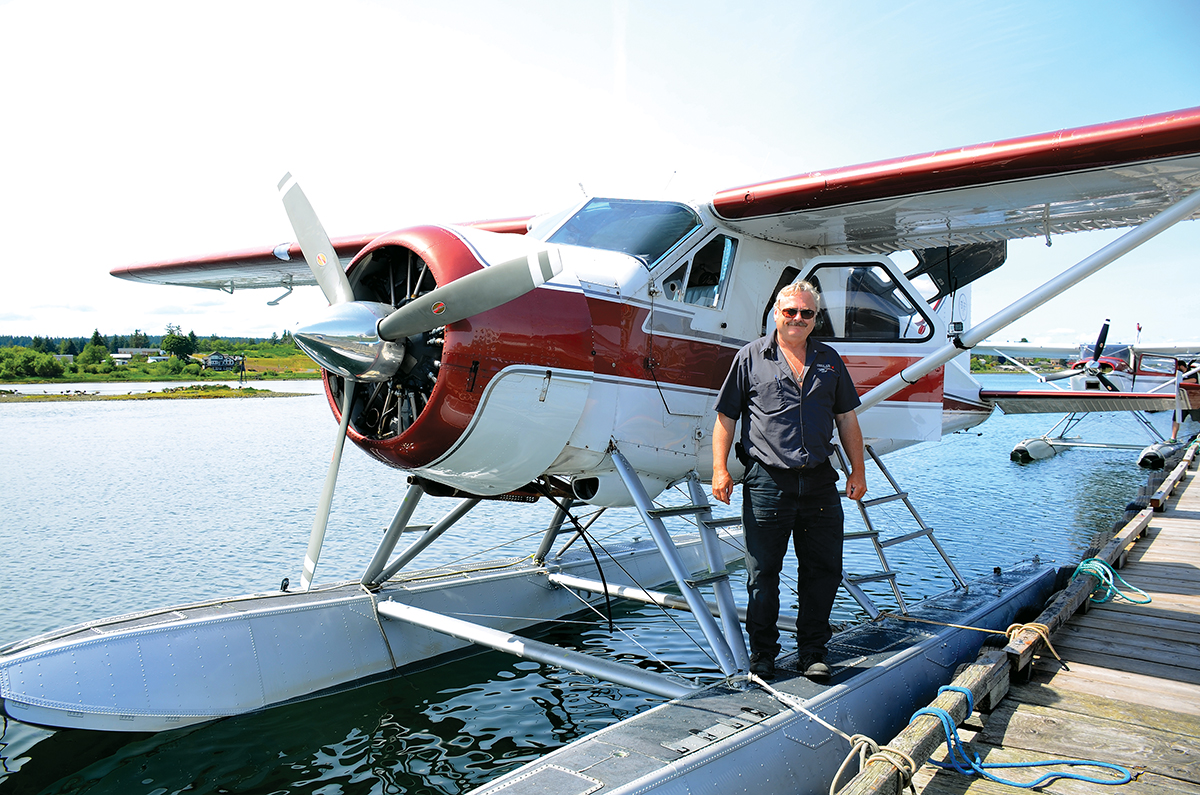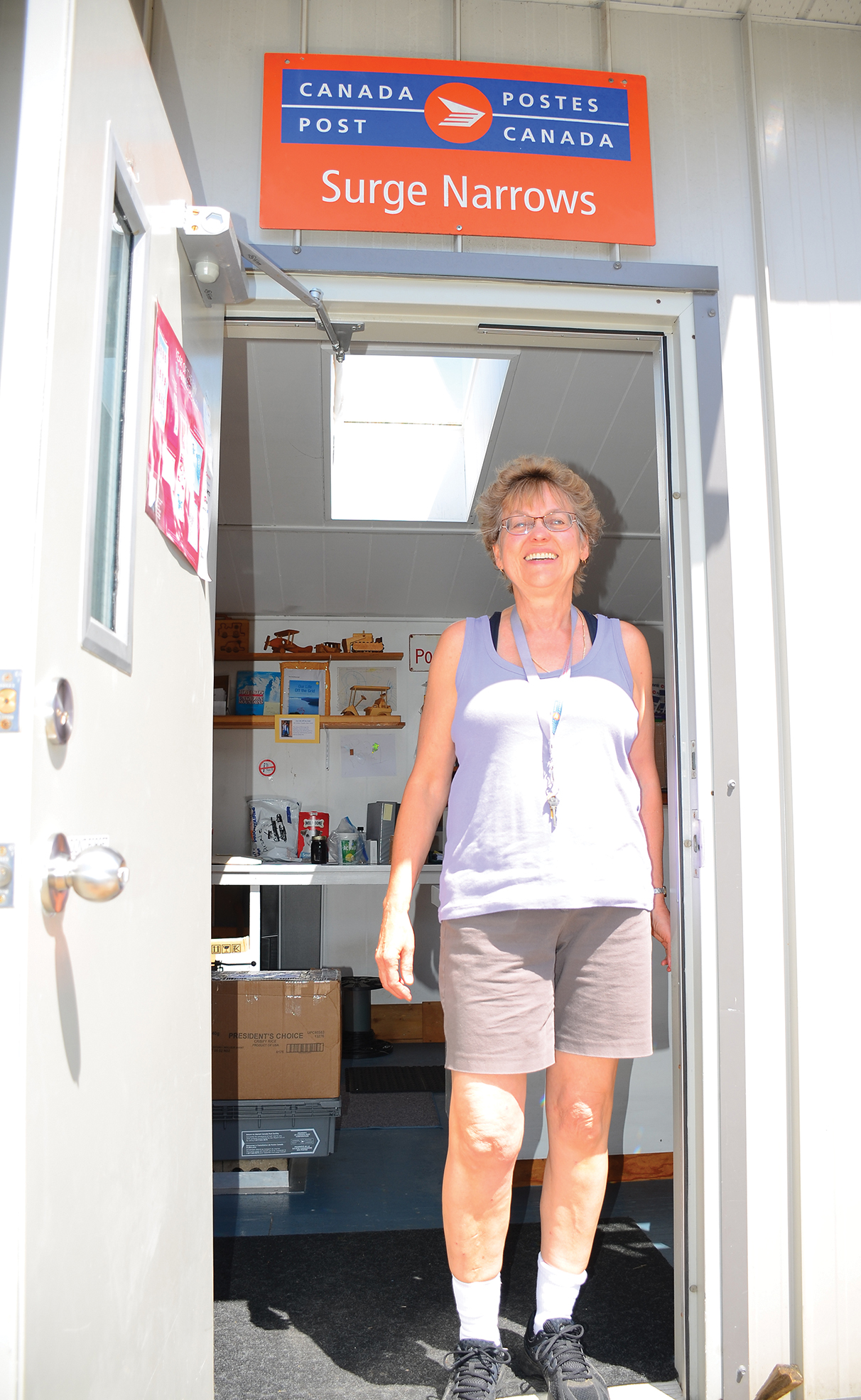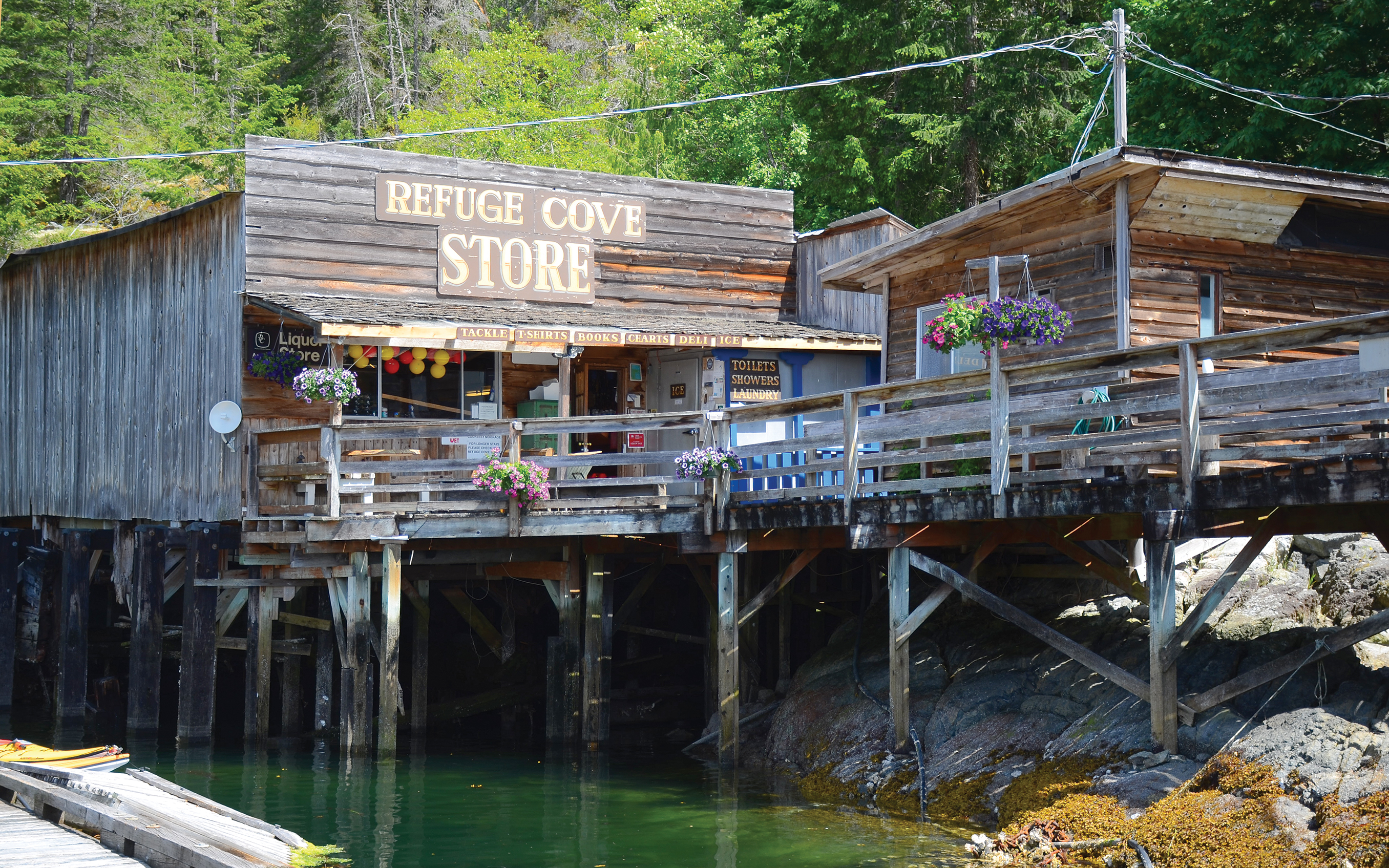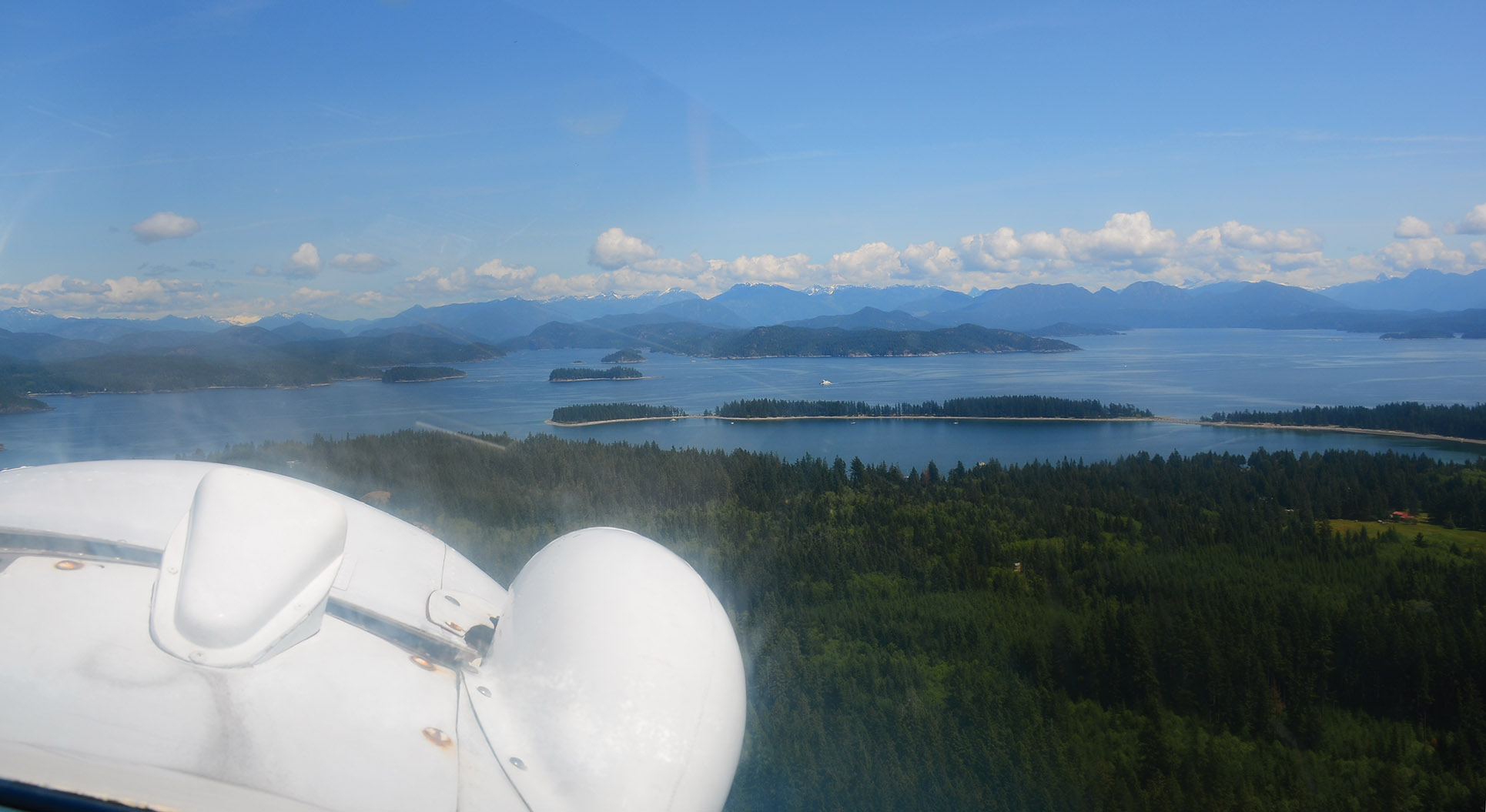One of the most beautiful vistas you can view on this – or any other coast – is the sea to mountain to sky scenery of the Discovery Islands located between Vancouver Island and the British Columbia mainland.
It’s a maze of channels, narrows and passes between rugged islands that reach from sea level to snowline.
On a sunny day it’s a world of azure sky, deep blue ocean and green forested mountainsides and the usual way to access it is by boat. But it’s not the only way.
Campbell River-based floatplane operator Corilair offers “flightseeing” tours to this scenic wonderland that enable visitors to hop from Campbell River to resorts, coves and historic settlements dotted along the shores of the Discovery Islands and up mainland inlets.

Corilair began flying the friendly skies in 1989 from its home base on Cortes Island. Then in 2000, it was purchased and moved to Campbell River.
Although the tourist services it provides are probably how it’s more romantically viewed, the bulk of the company’s business is still as a workhorse delivering people and freight to remote locations at the northern end of Georgia Strait. The Discovery Islands are dotted with settlements, camps and lodges and they need air service to bring people and freight in and out on scheduled and chartered flights.
But it’s the air of adventure that attracts tourists and Campbell River has a big advantage in being a jumping off point for a big, bold and beautiful land.
One of the quickest and most popular ways to visit this beautiful sea and landscape is through Corilair’s Historic Mail Tours. This involves hopping on board one of Corilair’s De Havilland Beavers or Cessna float planes as it literally delivers the mail – and other goods, services and people – to the myriad stops accessible by air. Visitors can tag along on these varying itineraries as the pilots make service calls to working locations in this region.
“We have people come from all over the world to fly about with us,” says pilot Mike Farrell, one of Corilair’s owners. “It’s rather unique…You go out and you make multiple stops and you get to get out and mingle in each of the stops. Pretty much everywhere we go is off the grid.”
There’s no public transportation or power or any services or roads to them so the only way you can get there is by floatplane or boat.

And while a mail run – both metaphorically and literally – is a working holiday, for the plane anyway, it appeals to tourists because of a combination of factors, Farrell says.
“One, it’s off the grid,” he says. “Two, off the grid is really, really close to us, so we only have to actually fly for 10 minutes and we’re off the grid from here. It’s not like we have to go this horrendous amount of distance to go do that. Three – at the stops we go to, most of it you’re seeing the real thing. It’s not a tourist trap or it’s not staged. This is how these people live year-round.”
On one mail run flight tour, this writer took off from Corilair’s home base on the Tyee Spit. Lifting off from Discovery Passage we fly north over Quadra Island, the luxurious April Point Lodge drops below us as we gain altitude. We fly to the east side of Quadra Island and then head up Hoskyn Channel along the west coast of Read Island to our first stop at Surge Narrows.
Putting down at the Narrows, we land on the water – always an exciting experience – and motor into the government wharf where the Canada Post outlet is housed. Farrell approaches the wharf at an angle and then cuts the engine to drift expertly to rest at the dock. He hops out and ties the plane up and everybody disembarks for a 10-15 minute stretch of the legs while Farrell seeks out the Surge Narrows post master.
Walking up from the wharf along a gravel road, you immediately notice the silence. No background traffic, building hum or any other human sound intrudes on your ear. It’s just the breeze and the birds as you walk along a country lane to “downtown Surge Narrows” where the community centre and Surge Narrows school are located. A sunny school field is edged by vibrant foxgloves and green, green grass. This is your first taste of island life and its well-deserved reputation for tranquility.
Back at the wharf, the post master has been found and the mail is offloaded. Post Master Donna Keeling offers visitors an opportunity to mail a post card home sporting the unique Surge Narrows post stamp.
Back on the plane, we take off from the wharf, the Beaver engine roaring as we gain enough speed to achieve liftoff. Farrell doesn’t take ‘er straight up though. Instead, just a few feet off the water we fly low up Whiterock Passage, a narrow cleft between steep-sided Read and Maurelle islands. Then we head northeast towards our next stop, Toba Wilderness Resort at the mouth of Toba Inlet. This spectacularly-located lodge is preparing for the new season when we arrive but we get a short tour from owners Kyle and Andrea Hunter.
“It’s not a tourist trap or it’s not staged. This is how these people live year-round.”
This lodge is a collection of cabins on a shelf of shore at the foot of a steep mountainside that is highlighted by a high waterfall. The waterfall is important to the lodge not only for the beautiful clear creek that spills out from the bottom of it and tumbles over rocks and boulders into the waters of Pryce Channel, but also because it provides the lodge with its own hydroelectric power.
A small power house is home to the hydro facility which generates electricity from the water drawn off the waterfall that drops down a pipe, building up speed and energy that spins a turbine and creates electricity for this picturesque resort.
It’s this kind of real life ingenuity and resourcefulness that characterizes the many lodges and communities dotting this region.
 After picking up a passenger, we’re off to our next destination, Refuge Cove, located southeast of Toba Wildernest on West Redonda Island. Refuge Cove is an old settlement that provides groceries and gas to boaters. It’s less busy now than in its heyday when it was a busy stop for northbound marine traffic prior to the removal of the Ripple Rock navigation hazard in 1958.
After picking up a passenger, we’re off to our next destination, Refuge Cove, located southeast of Toba Wildernest on West Redonda Island. Refuge Cove is an old settlement that provides groceries and gas to boaters. It’s less busy now than in its heyday when it was a busy stop for northbound marine traffic prior to the removal of the Ripple Rock navigation hazard in 1958.
That dangerous obstacle to large vessels was blown up in the largest non-nuclear explosion and allowed large vessels to negotiate the more direct route to the Inside Passage through Discovery Passage and the constriction of Seymour Narrows. For more on this, see the story on the Ripple Rock Trail on page 15 of this edition of Wave.
The removal of Ripple Rock meant that northbound traffic no longer needed to stop into Refuge Cove and the number of vessels stopping in declined. However, it’s no ghost town as it now mainly serves boating and sailing traffic, many of whom visit nearby Desolation Sound Marine Park. Like most service ports in this island region, many of the buildings stand on pylons with boardwalks partially over the water and tidal rocks. Picturesque is the word that comes to mind as this interface between sea, rock and island compels you to stay and linger a while.
But, this is a mail run, so it’s time to gather up the mail, board the De Havilland and take off for home. Now we run mostly west as we cross Cortes Island, Sutil Channel, the south end of Quadra Island again and then land outside Tyee Spit and motor into home port at Corilair’s seaplane terminal.
That’s another mail run completed in approximately two hours of travelling time, short but the amount of ground (and sea) covered is amazing and the scenery experienced is spectacular. Few mail runs are exactly the same as the itinerary is determined by the deliveries and pick ups that are needed. But it’s a fun and easy way to see this spectacular island wilderness. However, it’s not the only way Corilair’s floatplanes enable you to see it.
Another half-day trip involves a partnership with Eagle Eye Adventures where one half of the travelling party flies to destinations while the other half explores the region on the water with Eagle Eye’s large powered Zodiacs looking for whales and other wildlife. The two meet half way and exchange passengers allowing each group to continue their tour on the other mode of transportation.
The Eagle Eye Zodiac travels through Discovery Passage, viewing the inspiring scenery of Copper Bluffs and taking in the thrill of Seymour Narrows on their way to the Stuart Island area via the aptly named passage known as Hole In The Wall. The water travel segment of the outing culminates with light refreshments and a pause at Big Bay (Stuart Island), where they meet the Corilair floatplane to exchange passengers.
The Corilair sky portion of the tour continues from where the Eagle Eye Zodiac left off departing for two more “off the grid” settlements, each with its own unique lifestyle and history. Opportunity for a short exploration and interaction with the locals is presented with each stop.
You can also experience the excitement of this coast through Corilair’s partnership with Destiny River Adventures which they’ve named the “F-ing Adventure.” The Fs stand for: Float – Fly – Food – Fun – Falls – Fabulous – Fanciful – Fantastic – Fascinating – Flavourful.
It involves a professionally guided river rafting tour with Destiny River Adventures and a scenic flight with a stop for lunch with Corilair.
And if that’s not enough for you, you can choose the the Feast Flight which is a day trip consisting of an aerial tour of the local area, with a stop in at a featured location for lunch or dinner at: Blind Channel Resort – Located On West Thurlow Island; Dent Island Lodge – Located On Dent Island; Rendezvous Lodge – Located On North Rendezvous Island; or Upcoast Summers – Located In Refuge Cove.
Corilair also offers a number of other tour options. They all add up to the fact that seeing this beautiful scenery by air is definitely one of the best ways to go.
